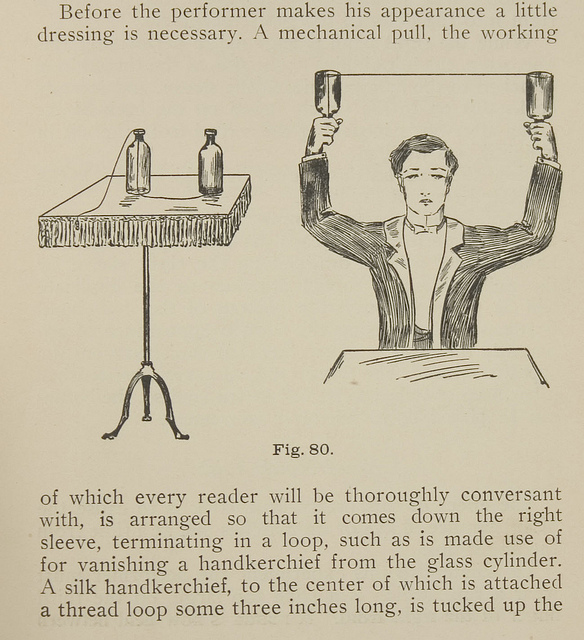 Don’t worry, all ye holders of weak stomachs! The anatomy of a book is not gross at all, unless you want it to be. Seriously, let me know and I will happily discuss bookish anatomy dealing with diseased polka dot guts from the 17th century.
Don’t worry, all ye holders of weak stomachs! The anatomy of a book is not gross at all, unless you want it to be. Seriously, let me know and I will happily discuss bookish anatomy dealing with diseased polka dot guts from the 17th century.
Our specimen for today’s highly scientific anatomical study is Henry Ridgley Evan’s Magic and its Professors. Evans, you may recall, was an eminent Baltimorean known for his studies on magic. He was also known for having a rather dashing way with a popped collar.
Now onto the anatomical study! Let’s first check out the binding. Pretty flashy, right? It promises the lure of ancient Egypt in garish colors! Who wouldn’t want to read this? The binding technically isn’t a binding at all, but something called a casing or a publisher’s binding. Real old-school book binding meant that the textblock was sewn to the binding, but due to changes in book-making brought about by the Industrial Revolution, it became cheaper and easier to simply glue the text block directly to a case. As with so many things, cheaper and easier techniques led to books breaking apart. And at times this breakage is totally awesome because it reveals paper waste that was used to put the book together! The waste used to compile this book includes an old publisher’s book list hawking such enticing titles as “What to Wear: Chit Chat on Dress” and the sure-to-be salacious “Gossip from Bookland.” Plus, the lining of the casing itself reveals a rather fascinating prophecy: “European travelers take their own soap.” But where they take it to shall forever be a mystery.
Now let’s see what’s inside! Dig this — one of the endpapers contains a note from he-who-duels-with ghosts, Henry Ridgely Evans! This is called provenance, folks. Evans donated this copy of the book to the one and only George Peabody Library! Why not visit the Peabody or Special Collections in the Brody Learning Commons and conduct your very own study into the fine and serious art of book anatomy!
